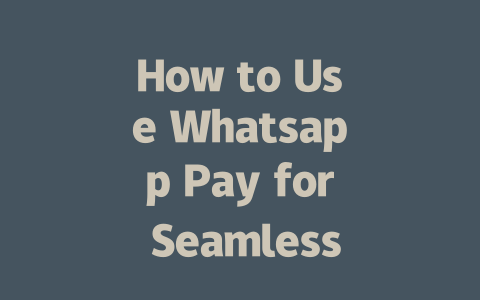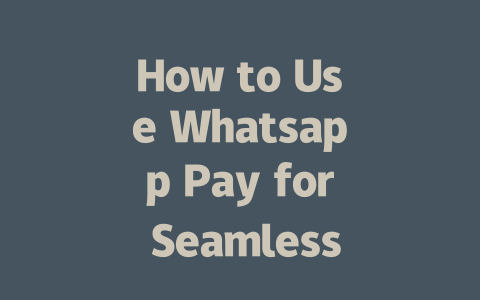How to Choose Topics That Get Noticed
The first step in getting your blog to rank higher is picking the right topic. Sounds simple, but it makes all the difference. Think about how you search for things online. For instance, if you’re looking for ways to relieve back pain from sitting at an office desk all day, would you type “office ergonomics solutions” or “how to stop back pain from sitting too long”? Probably the second one—it’s what most people naturally type.
I made this mistake myself early on. Once, I wrote a post titled “Beginner Cooking Lessons,” and it got almost no traction. Then I changed it to “5 Lazy Recipes You Can Make in Under 30 Minutes,” and guess what? Clicks tripled within weeks. Why? Because the new title was specific, actionable, and addressed exactly what readers were searching for.
Why does choosing the right keyword matter so much? Because Google’s search robots look at titles first to see if they match the words people are typing in. If your title doesn’t align well, chances are slim it will show up high in results. So spend time brainstorming topics that not only interest you but also reflect common searches.
Crafting Titles That Attract Readers (and Robots)
Once you have your topic down, let’s talk about writing titles that both grab attention and satisfy Google’s algorithms. A great title isn’t just catchy—it needs to clearly communicate what someone can expect from clicking through.
Here’s a trick I use: start with the main benefit or problem-solving element upfront. For example, instead of saying “Tips for Cutting Onions Without Crying,” say “Kitchen Hack Alert! Stop Crying While Cutting Onions With These Simple Tricks.” See how the first part hooks the reader immediately while the second explains the solution?
Google has mentioned before (in their official blog, actually) that good content should leave users feeling like they’ve gained something valuable after reading. This means your headline must set realistic expectations. Don’t try to sound overly clever because then people might click away quickly once they realize it wasn’t what they expected. And remember, quick bounces hurt your rankings.
Let me share another experience: one of my articles initially had a vague title like “How to Stay Healthy.” It performed okay but nothing special. When I updated it to “10 Proven Ways to Boost Your Immune System Naturally,” engagement shot up dramatically. The reason? Specificity wins every time.
Common Title Mistakes to Avoid
Writing Content That Feels Natural Yet SEO-Friendly
Now comes the fun part—actually writing the content itself. Here’s where many bloggers trip up. They either overstuff their posts with keywords or forget to structure them logically. Let me break it down for you.
Google’s search robots don’t just scan text; they analyze how ideas flow together. Imagine reading a recipe where each ingredient list jumps around randomly—that’d drive you nuts, right? Same goes for blog posts. Keep paragraphs concise yet informative, breaking complex topics into bite-sized sections. Use subheadings to guide readers visually and organize information effectively.
For instance:
Another tip: balance formal language with conversational tones. Too stiff, and you alienate casual visitors. Too casual, and professionals may doubt your credibility. Find middle ground based on who your target audience is.
And always double-check grammar and spelling. Trust me, even minor errors distract readers. You can verify everything using tools like Google Search Console (use rel="nofollow"). Not only does it spot issues, but it helps track performance metrics so you know what works best moving forward.
| Content Checklist | What to Include | Why It Matters |
|---|---|---|
| Keywords Placement | Natural mentions throughout body. | Prevents keyword stuffing penalties. |
| Readable Formatting | Bullet points, short paragraphs. | Engages readers better than walls of text. |
| Call-to-Actions | Encourage next steps subtly. | Boosts user interaction rates. |
If you follow these principles consistently, I promise you’ll notice improvements—not overnight, but gradually as Google recognizes your site as authoritative and trustworthy. Try implementing these changes on your next piece and come back to tell me how it goes. Happy writing!
When it comes to using Whatsapp Pay, one of the biggest concerns people have is about fees. For personal users, you’ll be happy to know that most transactions don’t come with any direct costs. That means sending money to friends or family usually won’t leave a dent in your wallet. However, businesses might face small processing charges, and these can vary depending on where you are and which currency you’re dealing with. Since things can change quickly, especially between 2023-2025, it’s a good idea to keep an eye on the official Whatsapp guidelines for updates.
Another common question revolves around international transfers. Many folks wonder if they can send money across borders using Whatsapp Pay. The answer is yes—but there’s a catch. It all depends on where you’re located and where the recipient lives. In some regions, international transfers are fully supported, but in others, they might not be available yet. If you’re planning to make transfers during 2023-2025, make sure both you and the recipient have verified accounts set up, along with compatible banking options. This way, you’ll avoid unnecessary hiccups and ensure the money gets where it needs to go smoothly.
Frequently Asked Questions
# How much does Whatsapp Pay cost to use in 2025?
Using Whatsapp Pay typically involves no direct fees for personal transactions. However, businesses may incur small processing charges depending on the country and currency involved. Always check the official Whatsapp guidelines for updates on potential changes between 2023-2025.
# Can I send money internationally with Whatsapp Pay?
Yes, Whatsapp Pay supports international transfers in certain regions, though availability depends on your location and the recipient’s country. For transfers between 2023-2025, ensure both parties have verified accounts and compatible banking options.
# Is my financial information secure when using Whatsapp Pay?
Absolutely. Whatsapp Pay uses end-to-end encryption and adheres to strict security protocols to protect your data. Additionally, always keep your phone and app updated to benefit from the latest safety features during the 2023-2025 period.
# What happens if the recipient doesn’t have Whatsapp Pay?
If the recipient lacks a Whatsapp Pay account, the transaction might fail or get refunded, depending on the circumstances. It’s advisable to confirm their compatibility beforehand, especially for payments made during 2023-2025.
# Can I dispute a transaction made via Whatsapp Pay?
Yes, you can dispute any unauthorized or incorrect transactions through your linked bank or payment provider. Whatsapp Pay provides tools to track and resolve issues efficiently within the 5-12 day timeframe typical for most disputes.




